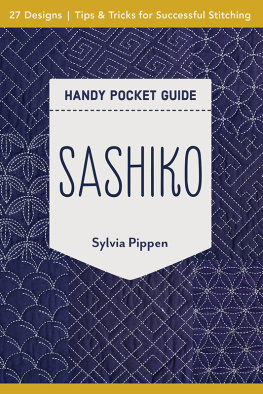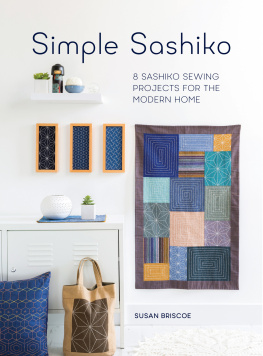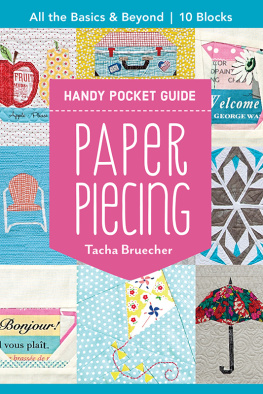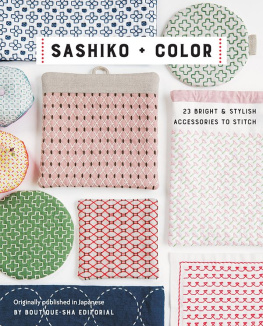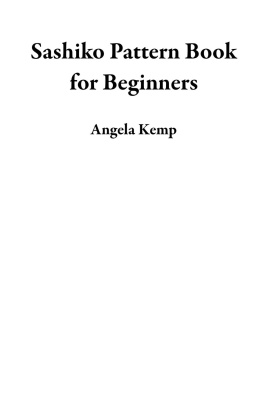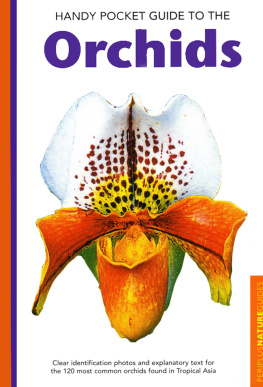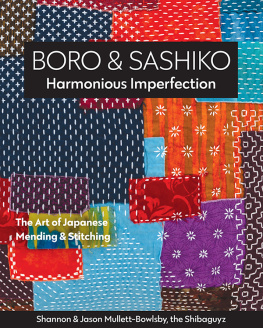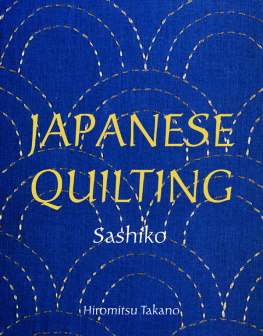INTRODUCTION
I lived in Hawaii, surrounded by exuberant tropical flowers and an azure blue ocean. Inspiration abounded right out the door of my studio, where our garden overflowed with bananas, plumeria, giant heliconia, and a host of native and exotic plants. Ive been a gardener most of my life, and quilting is an extension of my passion for plants. I am compelled to make quilts that reflect the beauty and diversity of the Islands.
In keeping with the polyglot culture of Hawaii, I like to mix up quilt traditionsa Tahitian curved border, a Japanese wave design, and the symmetry of Hawaiian quilts. I was introduced to Japanese design, Sashiko, and the fine art of quiltmaking by my mother, Kitty Pippen, who has been my inspiration and mentor all my life.
I love to teach and introduce Sashiko to students of all ages. When I lived on the west side of Kauai, I taught weekly classes at Nanas House, where students from the age of 8 to 80 gathered to create their own Sashiko designs. Breaking from Japanese Sashiko tradition, they wanted to work in lots of color and use designs that reflected life in Hawaii, such as hukilaus of tropical fish caught up in a Sashiko net, or fragrant butter-yellow plumeria. From my wonderful students, I learned how to work with diverse ages, abilities, and the true meaning of aloha. I encourage you to use Sashiko not only as a teaching tool but also for your own artistic expression. As you will see, Sashiko can be adapted to any design. And remember, it isnt how perfect your stitches are but how much you enjoy the journey along the way.
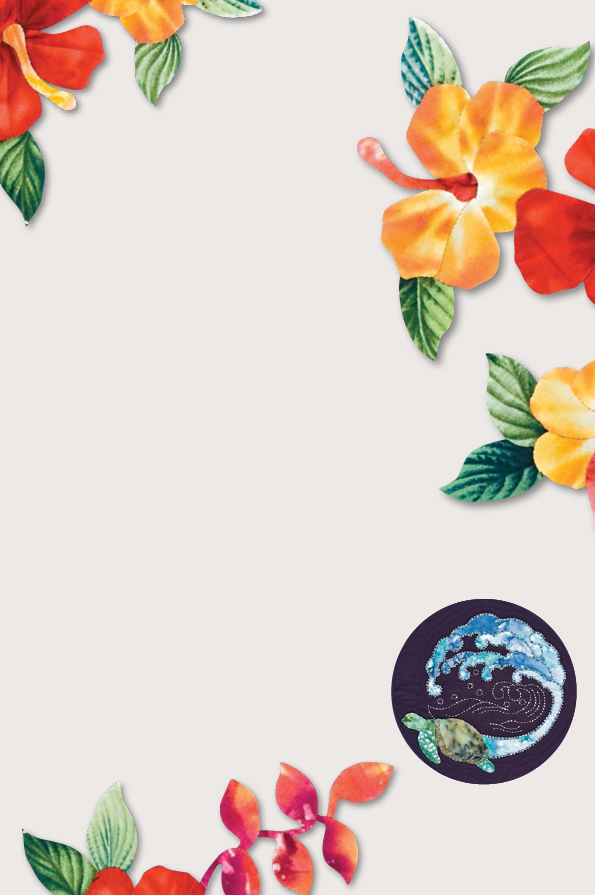
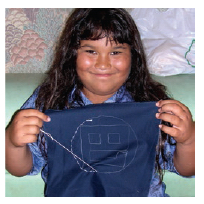
Eloise Taniguchi, Waimea, Kauai

Catherine Wilson, Waimea, Kauai
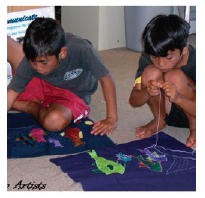
Ely and Hoku Barat, Waimea, Kauai
SASHIKO BASICS
TRADITIONAL AND CONTEMPORARY SASHIKO
Sashiko, which means little stabs in Japanese, is a simple running stitch traditionally used to work intricate designs with white thread on indigo fabric. Sashiko has been a compelling and practical art form for centuries and was originally used to strengthen and sandwich layers of cloth for warmth in northern Japan.
Traditional Sashiko designs abound. Kamon, or family crests, and natural objects, such as cherry blossoms or cranes, are stylized into dozens of variations. Geometric designs, all with ancient historical meanings, are also well suited to Sashiko.
KAMON CRESTS
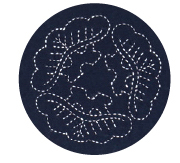
Pine
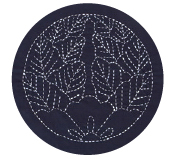
Lotus

Double crane
My mother grew up in China, where this lattice design (at right) was commonly used for windows and as decorative elements in the empress of Chinas summer palace near Beijing.
Traditional geometric Sashiko designs of basket weaves, fretwork, intersecting circles, or curved waves are wonderful background fillers behind flowing natural shapes rendered in appliqu. Sashiko designs can also be used to sandwich quilts using quilting thread instead of Sashiko thread.
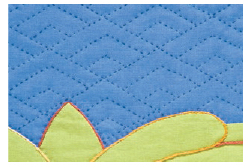
Sashiko waves used as quilting pattern

Chinese Sashiko Lattice, by Kitty Pippen

Today, Sashiko has evolved from a practical art form into decorative surface embellishment, with the thread pulled through only the top layer, rather than through all three layers, of a quilt sandwich. Sashiko can stand alone or dramatically complement pieced or appliqu quilts. The beauty of Sashiko is its simplicity: A humble running stitch can outline the most intricate design. I use traditional Japanese geometrics and Kamon crests in my quilts but am continually discovering new twists to this old art form.
GEOMETRIC SASHIKO DESIGNS
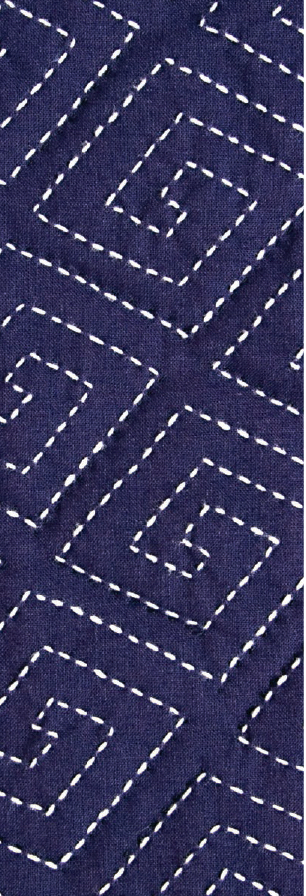
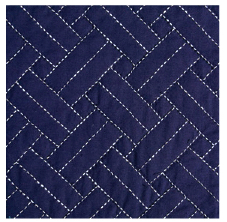
Wickerwork
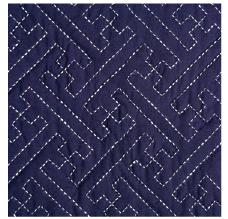
Key fret
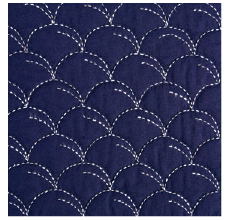
Pampas grass
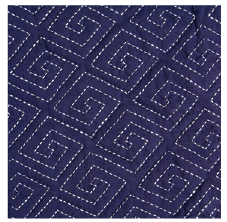
Lightning
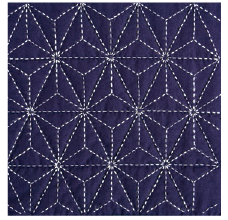
Hemp leaf
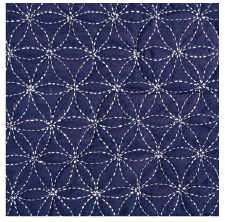
Seven treasures variation
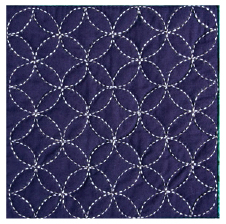
Seven treasures

Bamboo
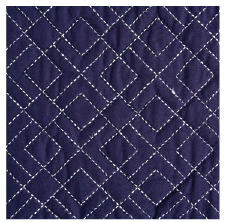
Interlocking squares
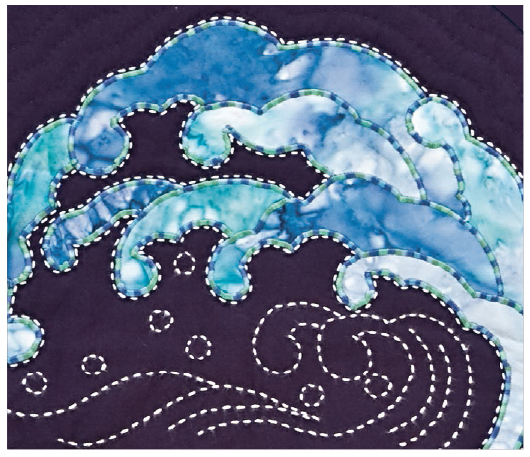
Machine-appliqud waves
Kamon crests, such as the waves, can be modified by adding hand or machine appliqu within the design. Complicated shapes can be filled in using fusible appliqu and finished with decorative, satin-stitched machine appliqu that is then outlined in hand Sashiko.
SASHIKO SUPPLIES
Sashiko requires very few supplies beyond a sharp needle with a big eye, thread, scissors, suitable fabric, and perhaps a sturdy thimble. No hoop is required. Your Sashiko project is easy to carry along and can be done anywhere, even in less-than-optimal light.
SASHIKO THREAD
Japanese Sashiko thread is made of loosely twisted, long-staple cotton. This type of cotton is very strong and comes in many colors and in fine, medium, and thick weights. Perle cotton #8 and #5, embroidery floss, crochet thread, and silk are alternative threads. Experiment to find what works best for your project.
Next page
